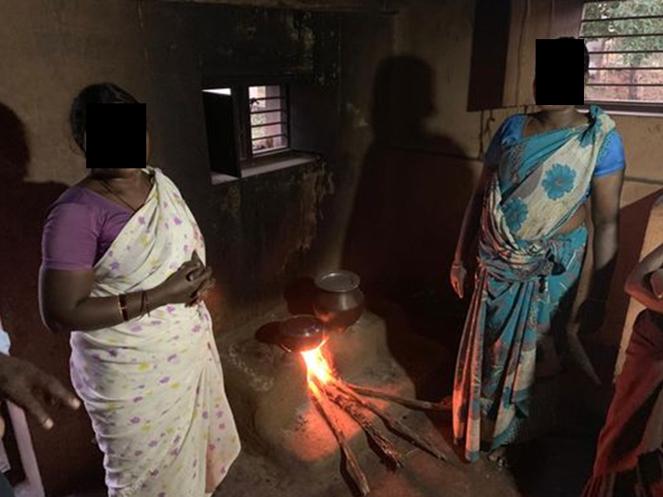Biomass cooking fires can incur “considerable damage” to the lungs of people who use them, a new study reveals. This effect is caused by “dangerous concentrations” of pollutants and bacterial toxins released during the burning of plant matter.

Roughly 3 billion people the world over still use biomass fuel for cooking, such as dry brush. This is making a significant contribution to the number of deaths related to household air pollution — an estimated 4 million annually. Governments around the world have launched projects to support the transition towards cleaner cooking fuels, such as liquefied petroleum gas, but economic and social factors, alongside faulty education on the benefits of this transition, means that many fires still burn on wood or brush.
Smokey issues
“It is important to detect, understand and reverse the early alterations that develop in response to chronic exposures to biomass fuel emissions,” said study co-author Abhilash Kizhakke Puliyakote, Ph.D., a postdoctoral researcher from the University of California San Diego School of Medicine.
The team used computer tomography scanners to analyze the lungs of 23 people who cook with wood biomass fuels or liquefied gas from Thanjavur, India. They also took air samples from their homes (which they used to measure pollutant concentrations there) and studied the lung function of the participants through traditional testing methods (such as spirometry). The scans were used to make quantitative measurements, so the team would, for example, take a scan when a person inhaled and another one when they exhaled, so they could measure the difference.
All in all, those who cooked with wood biomass were routinely exposed to higher levels of pollution and bacterial endotoxins. They also showed a much higher quantity of air trapping in their lungs, which is associated with lung diseases. Among the group, some participants had very high levels of air trapping and also showed abnormal tissue mechanics in their lungs, even when compared to their peers. This subgroup (around 30% of all biomass-burners) had more than 50% of the air they inhaled ending up trapped in their lungs.
“Air trapping happens when a part of the lung is unable to efficiently exchange air with the environment, so the next time you breathe in, you’re not getting enough oxygen into that region and eliminating carbon dioxide,” Dr. Kizhakke Puliyakote said. “That part of the lung has impaired gas exchange.”
“This increased sensitivity in a subgroup is also seen in other studies on tobacco smokers, and there may be a genetic basis that predisposes some individuals to be more susceptible to their environment”.
Smoke tended to affect the small airways of the lungs of participants, the authors explain, although the exact process is not yet clear. The study focused on cooking and biomass-fueled fires, but the findings are applicable to smoke from any source. Furthermore, the authors say that conventional testing has underestimated just how damaging smoke is to the lungs.
“The extent of damage from biomass fuels is not really well captured by traditional tests,” Dr. Kizhakke Puliyakote said. “You need more advanced, sensitive techniques like CT imaging. The key advantage to using imaging is that it’s so sensitive that you can detect subtle, regional changes before they progress to full blown disease, and you can follow disease progression over short periods of time.”
It is “crucial” for anyone who is exposed to biomass smoke for any extended duration to have a complete assessment of lung function by healthcare professionals to ensure that any potential injury can be resolved with appropriate interventions,” he adds. With the blaze of wildfires we’ve seen this year, this probably means that many, many people need to get their lungs checked.
The findings have been presented at RSNA 2020 – Radiological Society of North America Annual Meeting in Chicago.


